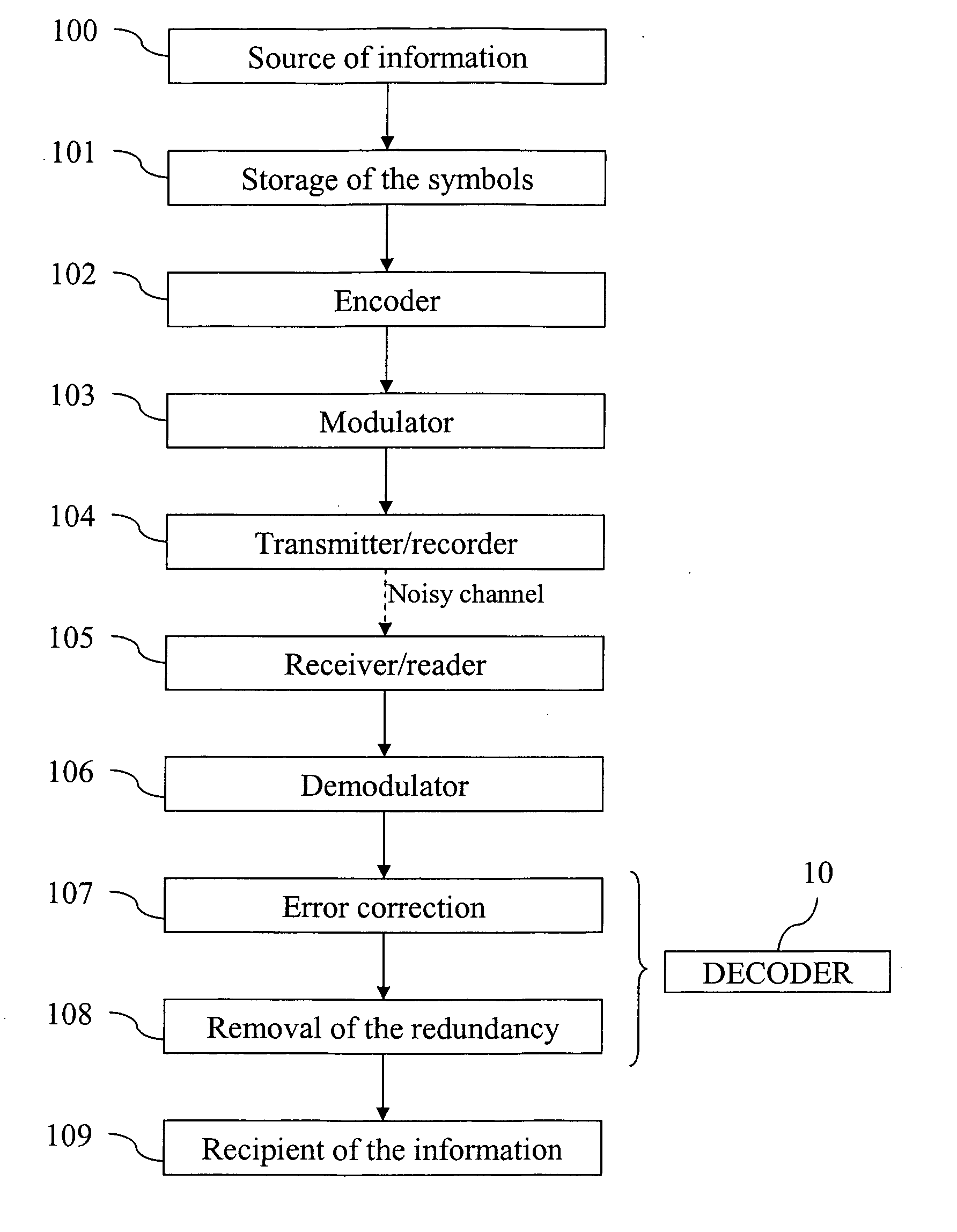Decoding and error correction for algebraic geometric codes
a geometric code and algebraic technology, applied in the field of communication or recording of data, can solve the problems of difficult to develop a decoding algorithm, high number of information symbols may be rendered unreadable, transmission errors, etc., and achieve the effect of reducing the complexity of calculations
- Summary
- Abstract
- Description
- Claims
- Application Information
AI Technical Summary
Benefits of technology
Problems solved by technology
Method used
Image
Examples
Embodiment Construction
[0104]FIG. 1 is a block diagram of a system for transmitting information using a channel encoding and decoding according to the invention.
[0105] The function of this system is to transmit information of any nature from a source 100 to a recipient or user 109. First of all, the source 100 puts this information into the form of symbols belonging to a certain alphabet (for example bytes), and transmits these symbols to a storage unit 101, which accumulates the symbols so as to form sets each containing k symbols. Next, each of these sets is transmitted by the storage unit 101 to an encoder 102 which incorporates the redundancy therein, so as to construct a codeword of length n belonging to the chosen code.
[0106] The codewords so formed are next transmitted to a modulator 103, which associates a modulation symbol (for example, a complex amplitude) with each symbol of thecodeword. Next, these modulation symbols are transmitted to a transmitter or to a recorder 104, which inserts the sy...
PUM
 Login to View More
Login to View More Abstract
Description
Claims
Application Information
 Login to View More
Login to View More - R&D
- Intellectual Property
- Life Sciences
- Materials
- Tech Scout
- Unparalleled Data Quality
- Higher Quality Content
- 60% Fewer Hallucinations
Browse by: Latest US Patents, China's latest patents, Technical Efficacy Thesaurus, Application Domain, Technology Topic, Popular Technical Reports.
© 2025 PatSnap. All rights reserved.Legal|Privacy policy|Modern Slavery Act Transparency Statement|Sitemap|About US| Contact US: help@patsnap.com



